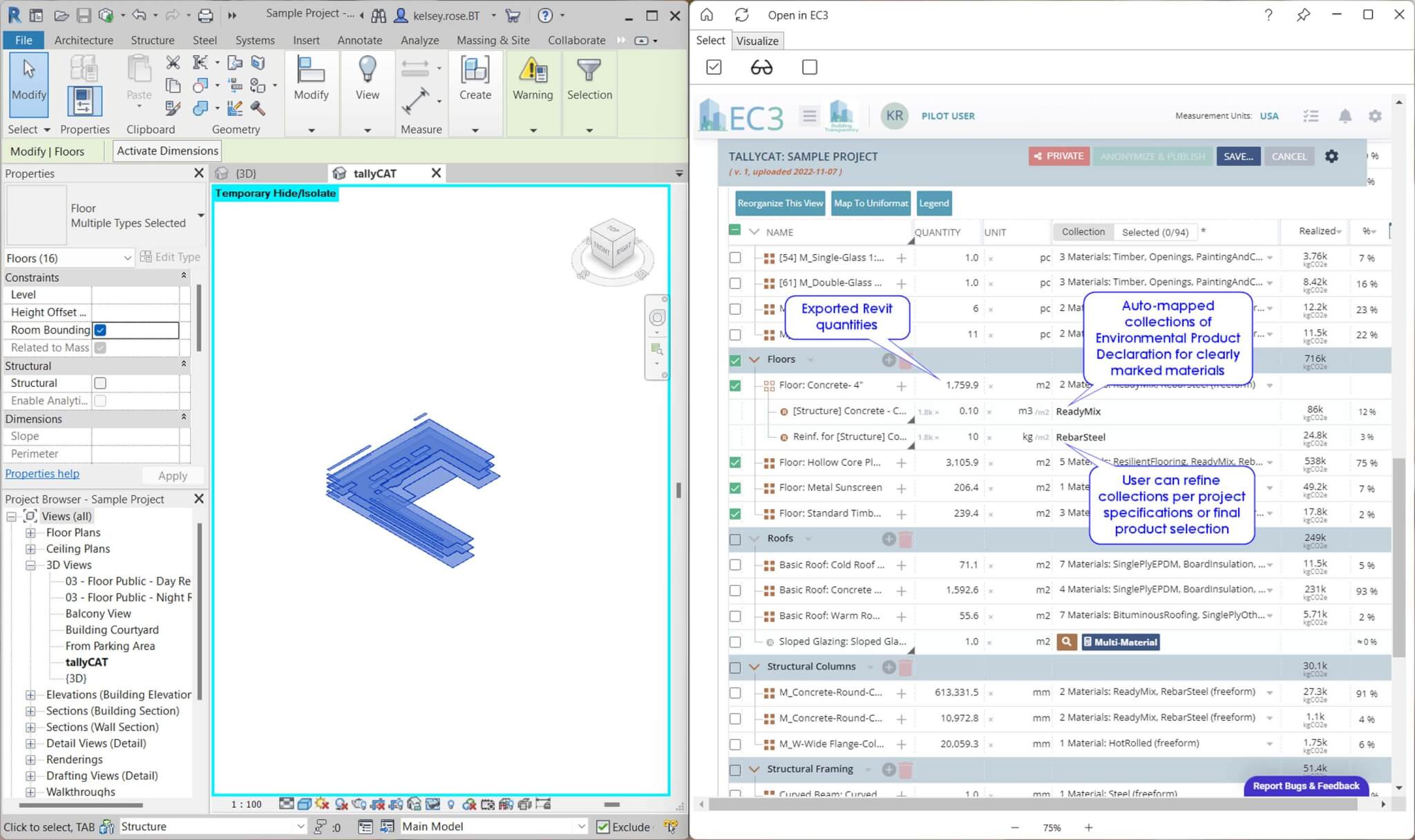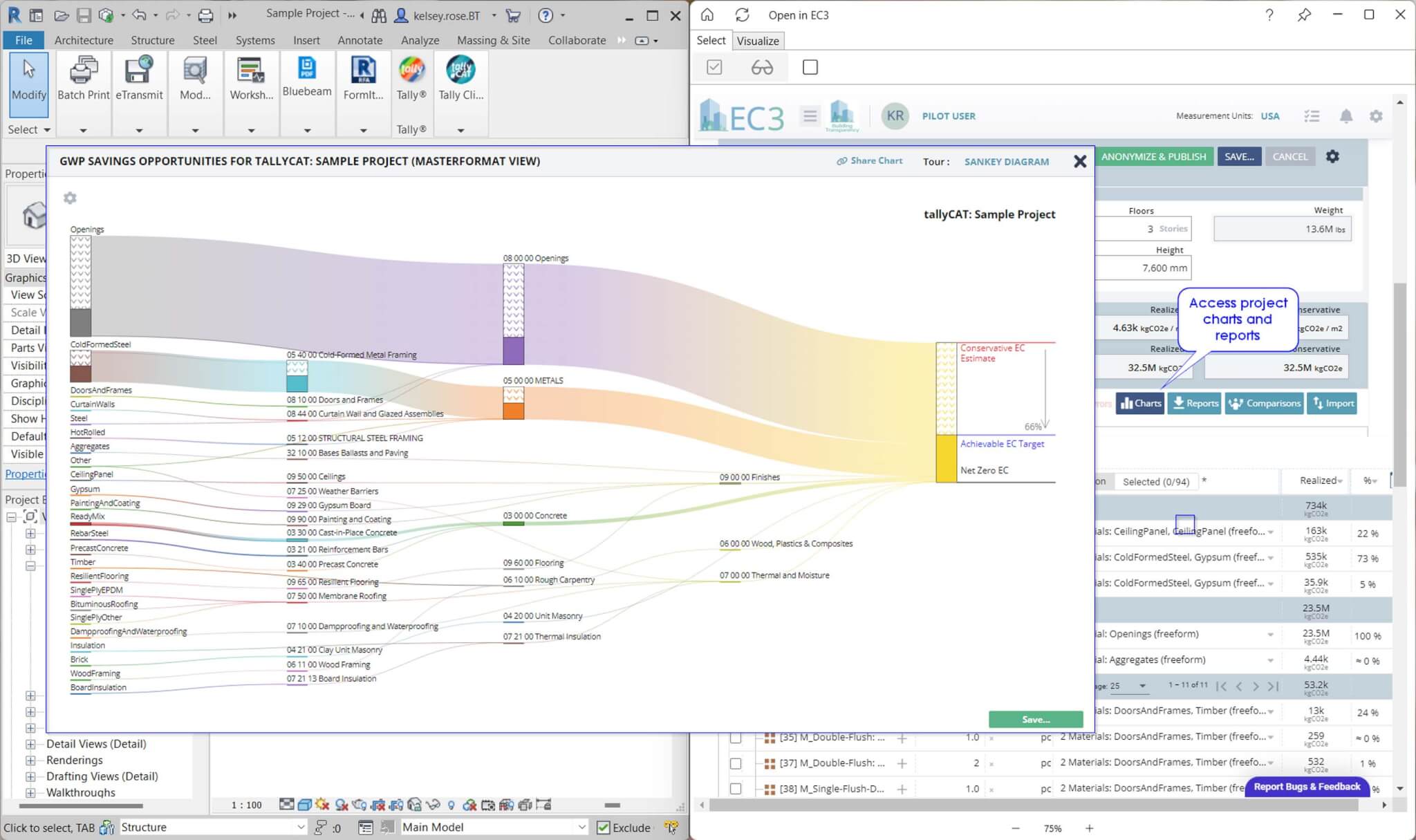A new plugin for Revit offers architects the opportunity to make informed material choices for building designs that put carbon reduction at front of mind. Tally Climate Action Tool, or tallyCAT for short, is a free open-access digital tool launched by nonprofit organization Building Transparency, Perkins&Will, and C-Change Labs.
Work on Tally began in the hands of architects and researchers at Kieran Timberlake in 2013. The firm handed over the tool to Building Transparency in 2021 to be further tweaked and to allow integration with the Embodied Carbon in Construction Calculator (EC3), a digital tool from Building Transparency that hosts a database of Environmental Product Declarations (EPDs). These are essentially nutrition labels for building products that detail information beyond just manufacturer, materials, and carbon footprint.
A grant totaling $460,000 from the Province of British Columbia, part of the 2021 CleanBC Building Innovation Fund, kicked off the latest iteration of the digital tool. Though it’s currently in a beta version, Building Transparency, Perkins&Will and C-Change Labs have plans to eventually develop tallyCAT as a whole-life carbon tool.

The plugin, designed to work with BIM modeling software Revit, uses the library of materials input in EC3. From the program, architects select from the materials list and are able to view details on the product’s climate impact, including its estimated lifetime carbon usage. The smart tool then offers solutions and suggestions to designers on how carbon can be reduced across the project. Similar to tallyCAT is Concrete.ai, a new software platform developed to reduce carbon specifically in concrete construction.
This information is laid out in an easy to read format, presented as a categorized table list. The software is also capable of generating charts and reports based off the input simulations. Architects can save materials and assemblies to their own libraries so that they can be referenced and used in future projects.
“We are co-developing tallyCAT with the aspiration of bringing low-carbon product selection into the design process, developing data-informed workflows that can become integral to every project,” said Jesce Walz, a designer and carbon leader at Perkins&Will in a press release.

While still in their relative infancy, life cycle assessment tools and carbon calculators have their respective shortcomings, in some cases datasets of product and material information for end of life performance isn’t even determined or recorded yet and details on low-carbon, earth-based materials can be few and far between, leaving gaps in the information presented by the tools. An accurate life cycle assessment also needs to account for maintenance, operation, including occupant behaviors and consider indoor pollutants in addition to the outdoor ones.
“Our team at Building Transparency is hyper-focused on providing the tools and resources needed to help the built environment industry understand, measure, and reduce its embodied carbon emissions,” said Building Transparency Executive Director Stacy Smedley.
“The tallyCAT beta tool is another step for us in providing a robust ecosystem of tools to enable action and the prioritization of low-carbon design and procurement decisions. With this new tool, we’re able to meet designers where they are in Revit and provide the data necessary to drive green specification and procurement.”











